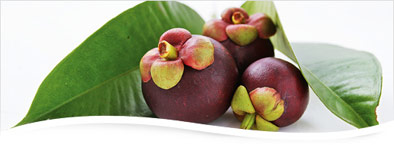The mangosteen fruit (or Garcinia mangostana, as it is known scientifically) is exotic, delicious and packed full of xanthones and other phytonutrients that demonstrate impressive health benefits.
It is also:
- found mainly in Southeast Asia and other tropical regions
- roughly the size of a tangerine—about 2-3 inchesin diameter
- often called the Queen of Fruits (Queen Victoria gave knighthood to anyone who brought it to her)
- has a bitter, purplish rind full of xanthones and other phytonutrients
- has a beautiful, white pulp with 4-8 segments of pure taste-bud bliss
In fact, the whole mangosteen fruit—especially the xanthone-packed rind—has been utilized to treat a variety of health conditions. As early as 600 AD, scribes in Southeast Asia recorded the use of the mangosteen as a general remedy and healing agent.
The mangosteen rind was sliced and dried, then ground to a powder and administered as an herbal preparation. The mangosteen rind was steeped in water overnight and taken as a tea. The mangosteen rind was made in to an ointment and applied externally as a lotion.It was through these popular uses that the benefits of mangosteen were passed down through history and several scientists and explorers took note.
When Europeans explored Southeast Asia folklore related to the mangosteen first spread to Western culture.
Now this delicious and beneficial fruit can be found in a category-creating beverage called XanGo® Juice!
A Little about the Tree
The small dark purple fruit grows abundantly and is harvested twice a year from a small evergreen tree.The mangosteen tree is actually in the same plant family as St. John's Wort, a recognized herbal supplement.
- short, thick and leathery evergreen leaves
- grows 20 to 80 feet tall
- first fruit harvest takes place 10-20 years after planting
- average lifetime yield of full-grown tree is 500
- some trees provide ripe mangosteen fruit up to 100 years
Remember to contact the person that shared this blog or fan page with you. They will be happy to answer all your questions and provide you with more information.
A good start is the Mangosteen Fruit Info website. It has a growing database of science, research and testimonials. Just go to the testimonial page and type in any keyword of your interest - you'll be amazed.
Another great place to see a few short videos is our YouTube page. We are compiling a selection of educational shorts to share with you to grow your knowledge base.

No comments:
Post a Comment